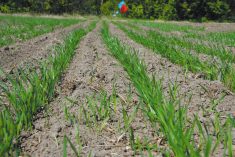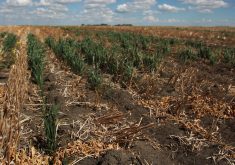CHICAGO, Ill. (Reuters) — A key stretch of the lower Mississippi River dropped to within inches of its lowest-ever level near the end of September and is expected to remain near historic lows just as the busiest U.S. grain export season gets underway, according to the U.S. National Weather Service.
Low water has slowed hauling of export-bound corn and soybean barges over recent weeks as shippers lightened loads to prevent vessels from running aground and reduced the number of barges they haul at one time to navigate a narrower shipping channel.
Read Also

No special crop fireworks expected
farmers should not expect fireworks in the special crops market due to ample supplies.
The water woes come at the worst possible time for U.S. farmers as newly harvested corn and soybeans are beginning to flood the market and as stiff market competition from Brazil has already eroded once-dominant U.S. exports.
Portions of the river have been closed 22 times since Sept. 1 for dredging or to remove barges that have run aground, and at least 36 groundings have been reported, the U.S. Coast Guard said.
The Mississippi River dropped to a reading of -10.62 feet on the Memphis, Tennessee, gauge on Sept. 28, just above its all-time low of -10.81 feet on Oct. 21 last year, according to NWS data.
The river is expected to remain below the -10 foot mark into at least mid-October, according to the latest forecast, creating a choke point between heavy production areas in the Midwest and coast terminals at the Gulf of Mexico, where around 60 percent of U.S. grain exports exit the country.
“October’s not normally a robust precipitation month, and if we’re here already … it’s a real cause for concern,” said Mike Steenhoek, executive director of the Soy Transportation Coalition.
Low water has also driven freight costs to the highest levels since last year’s historic river woes and made U.S. grain much less competitive in the global marketplace.















